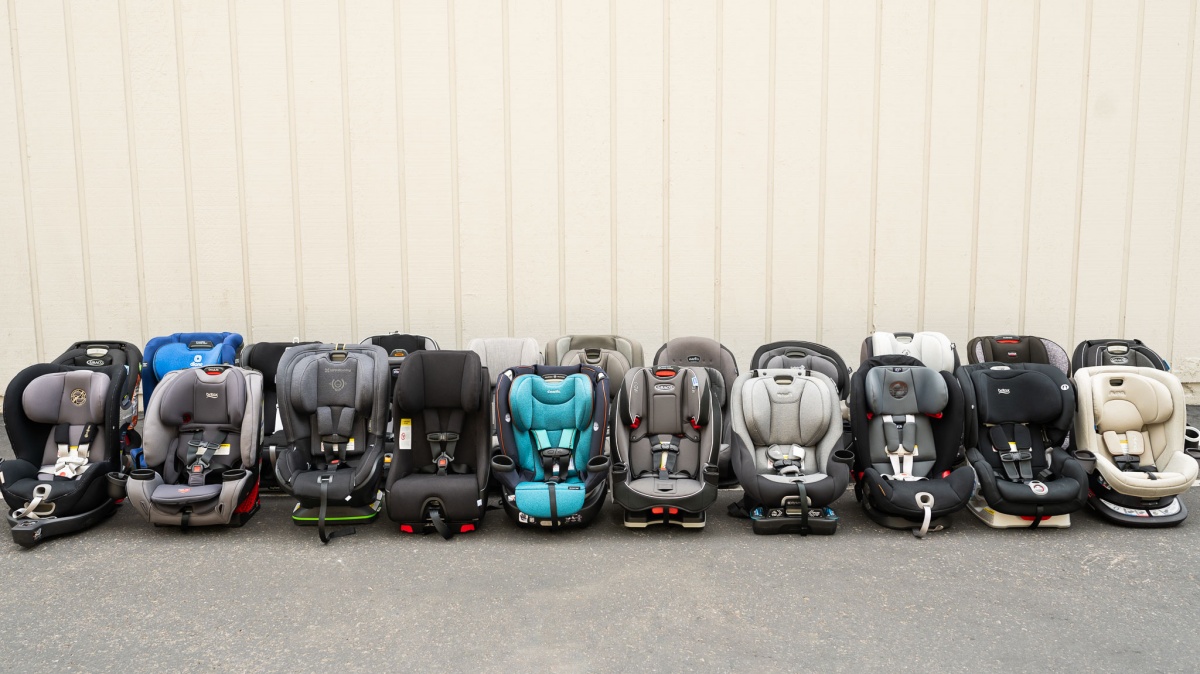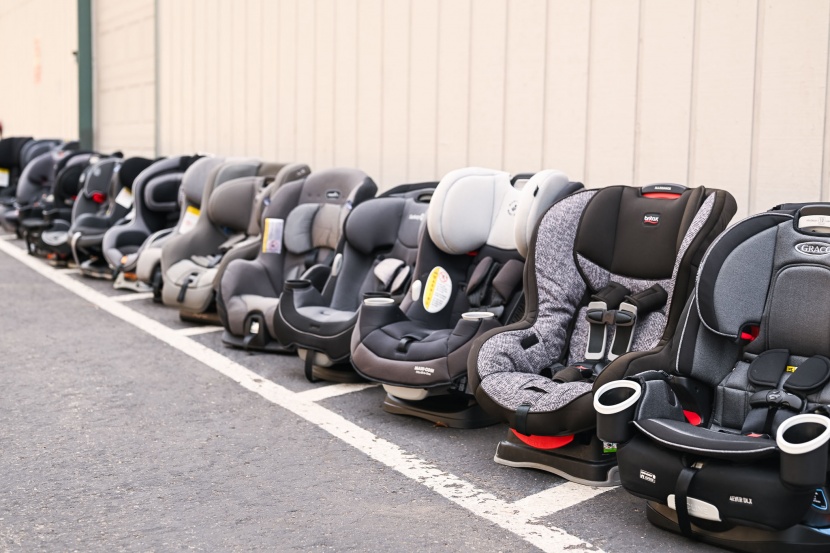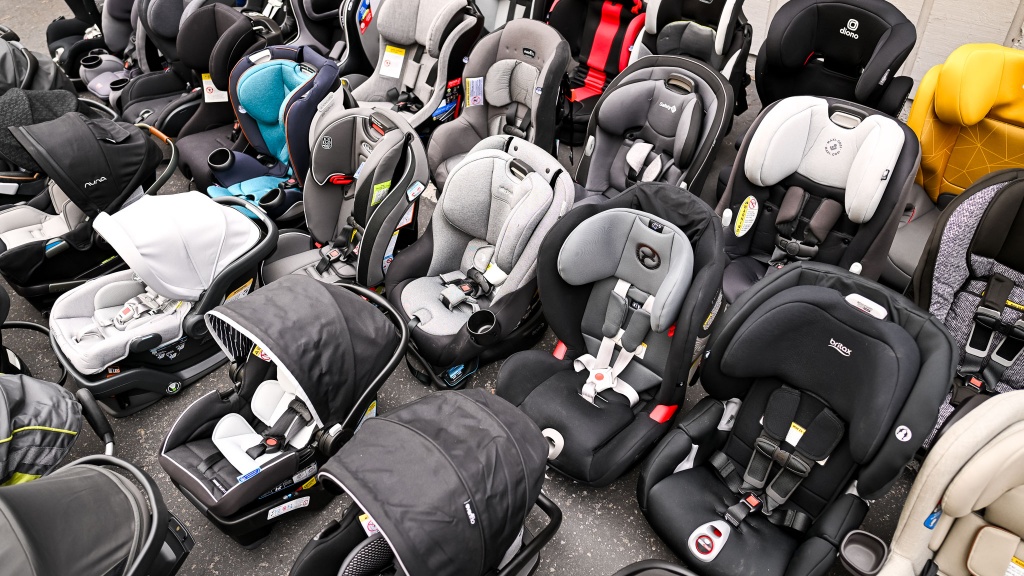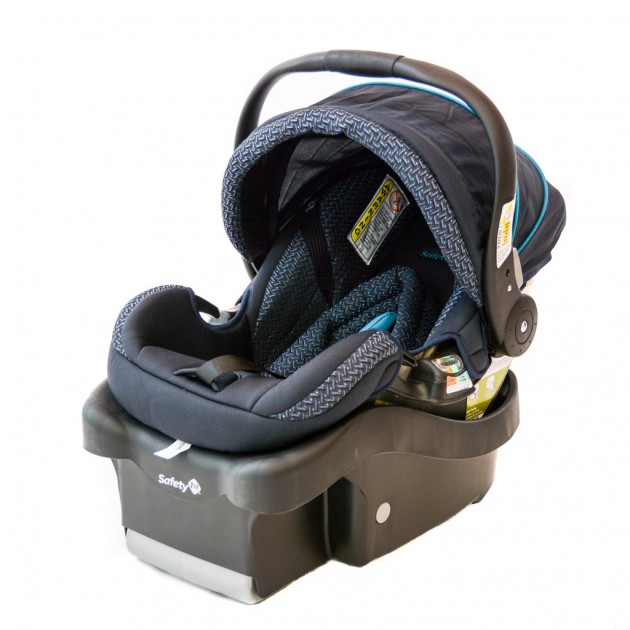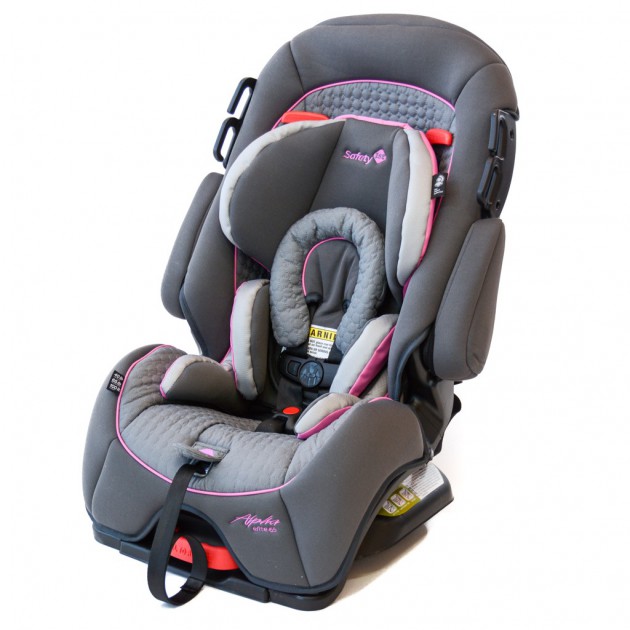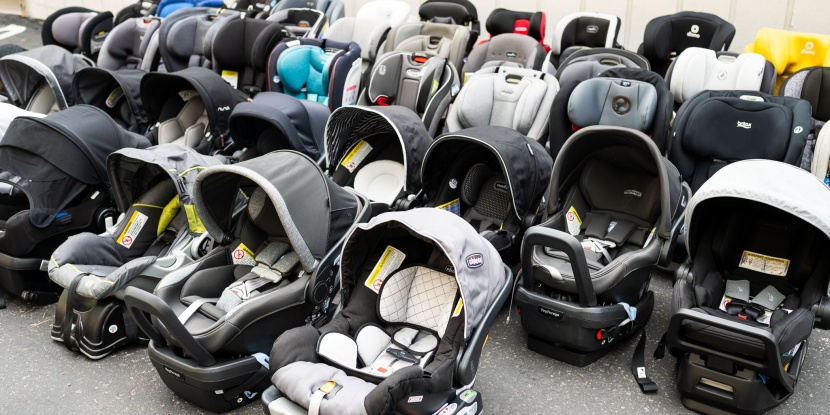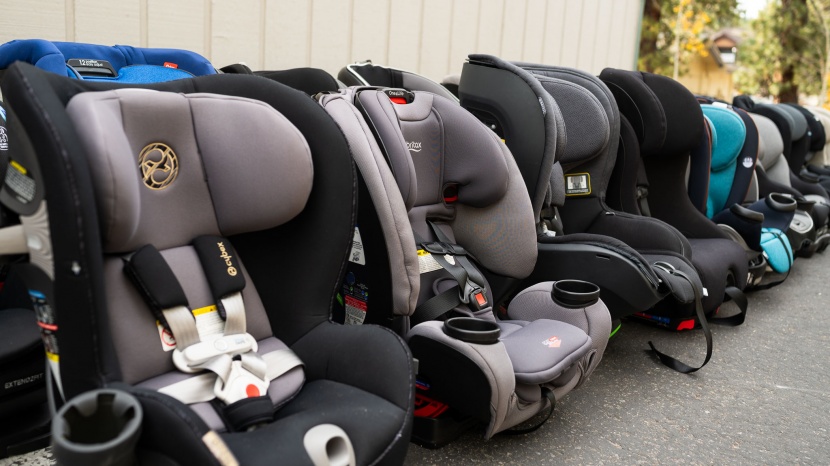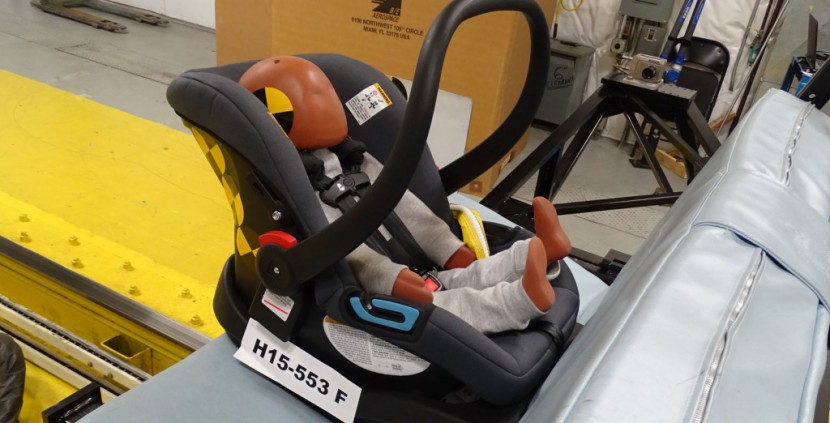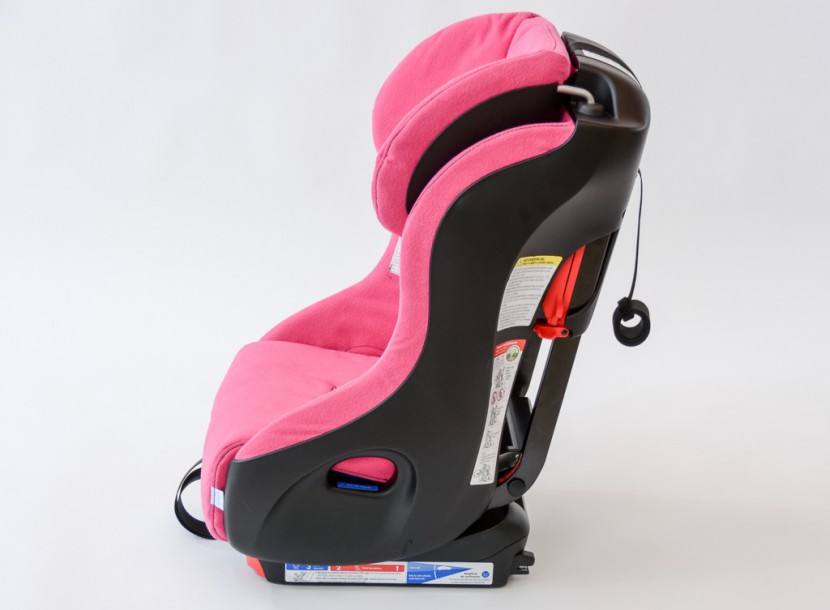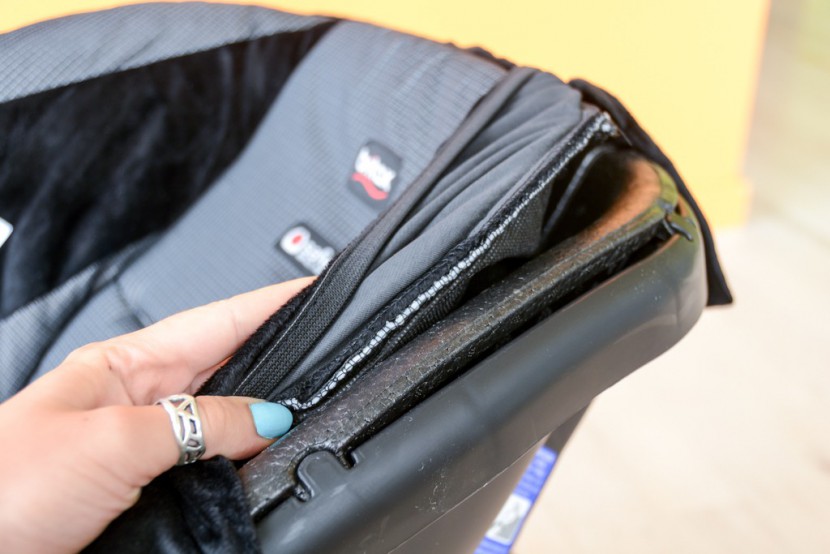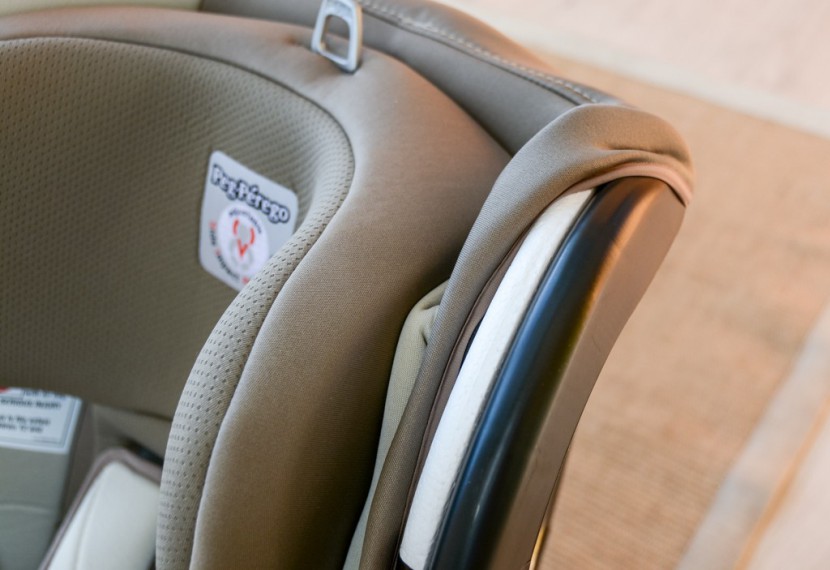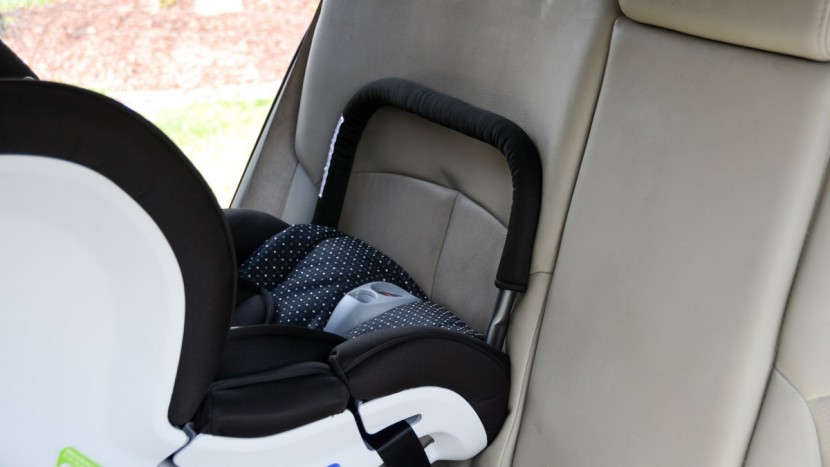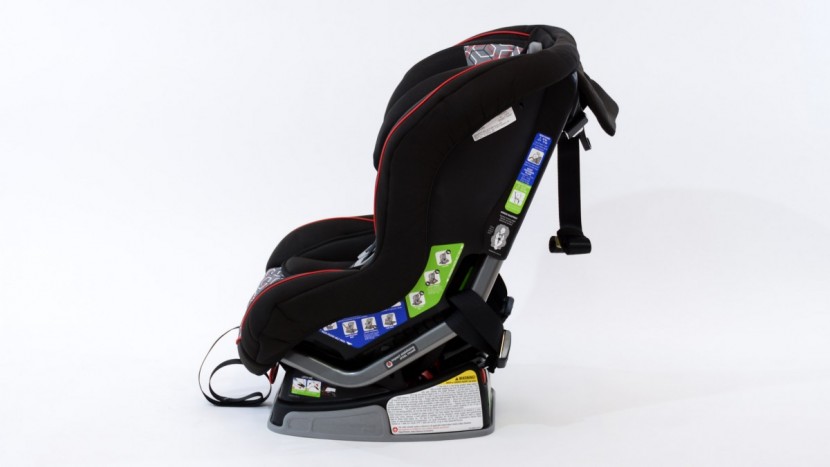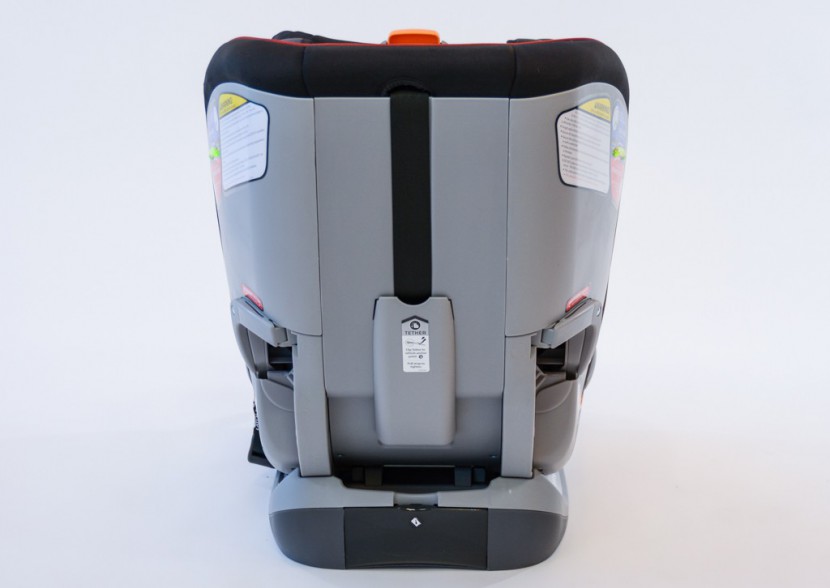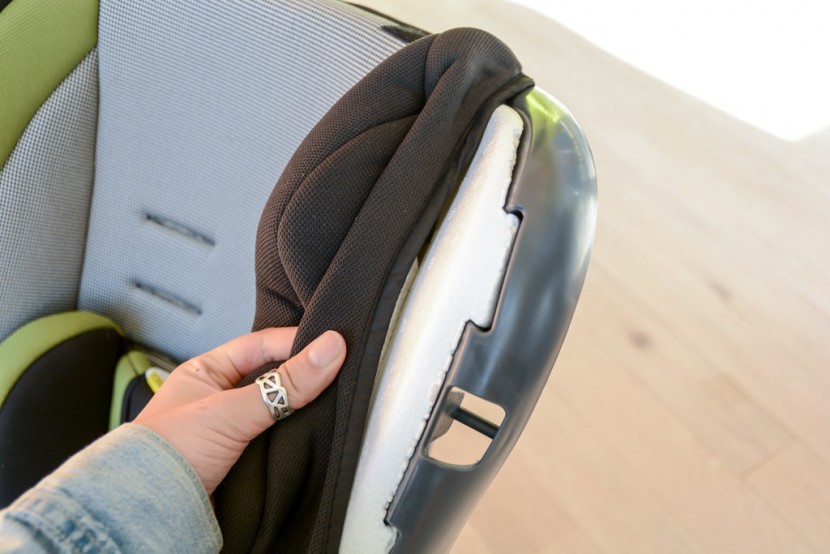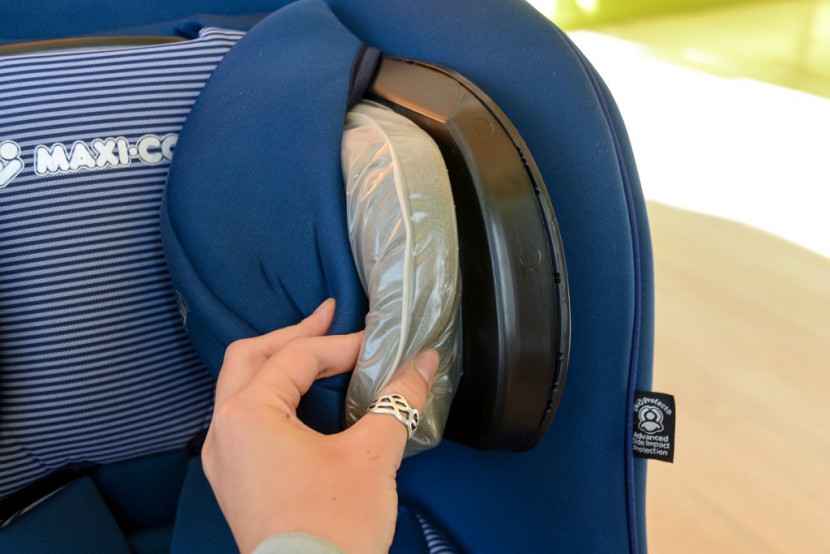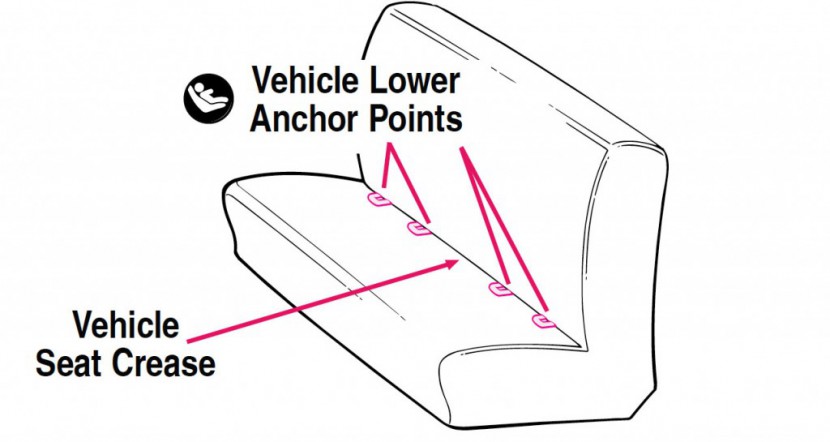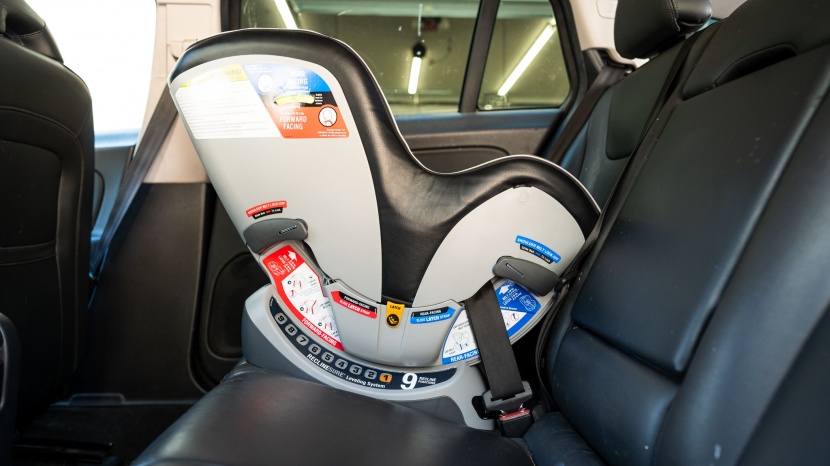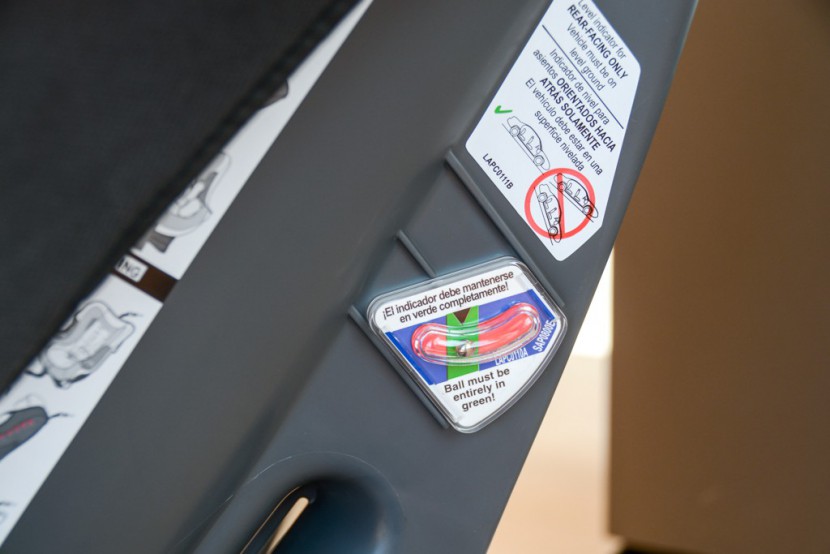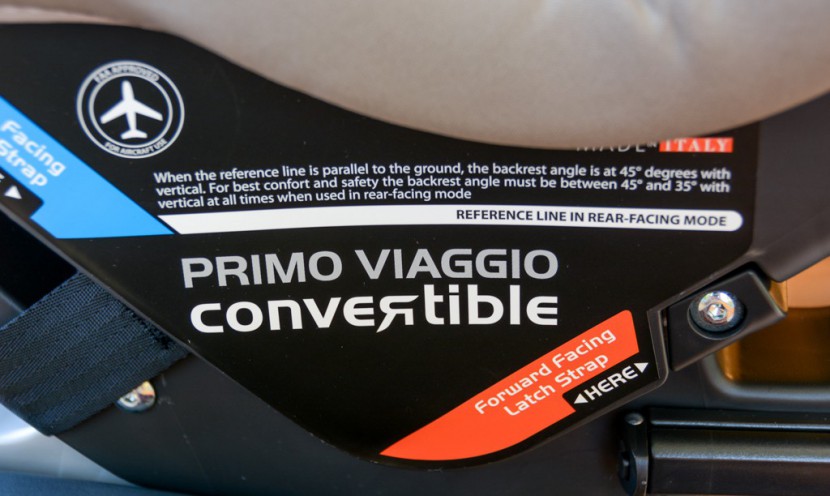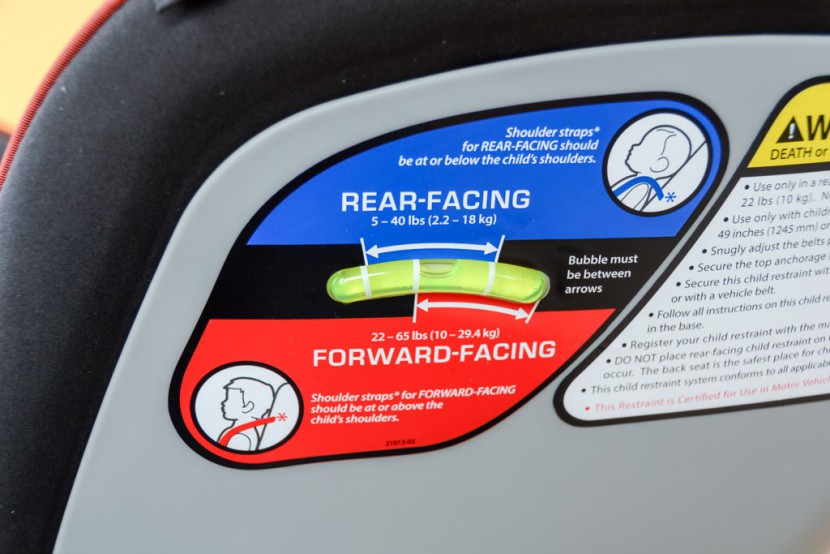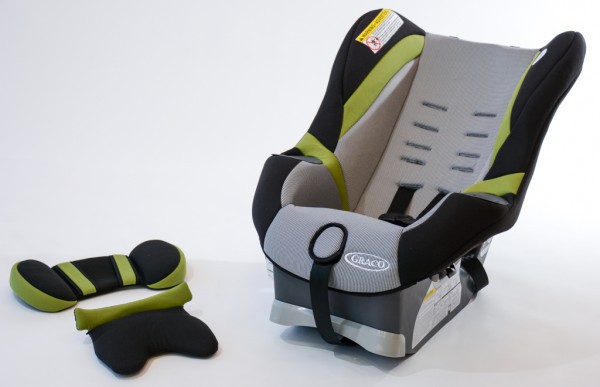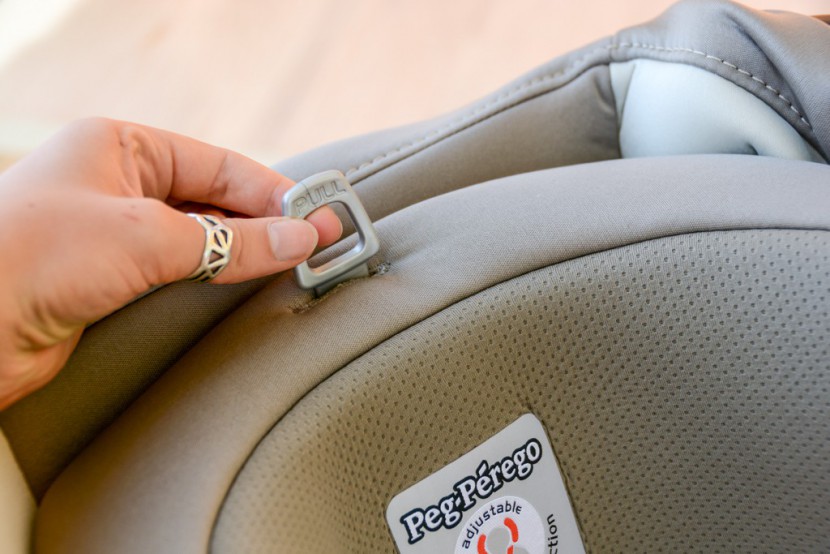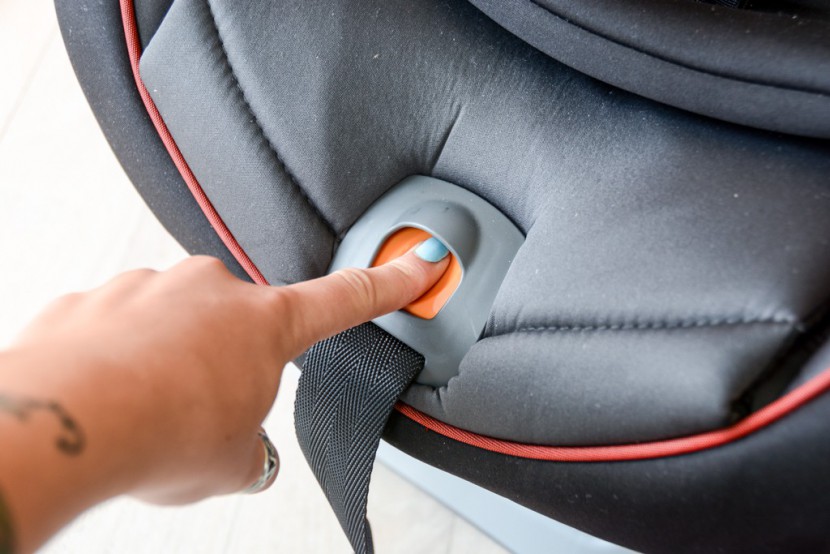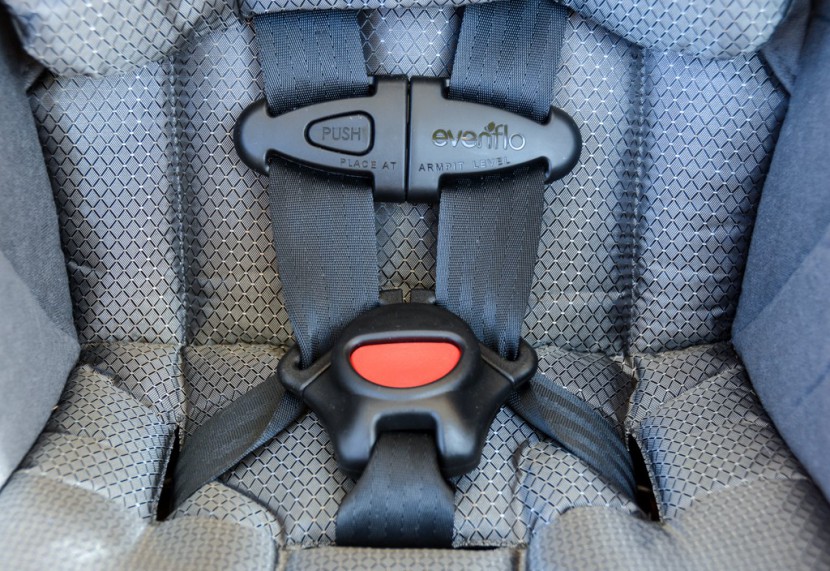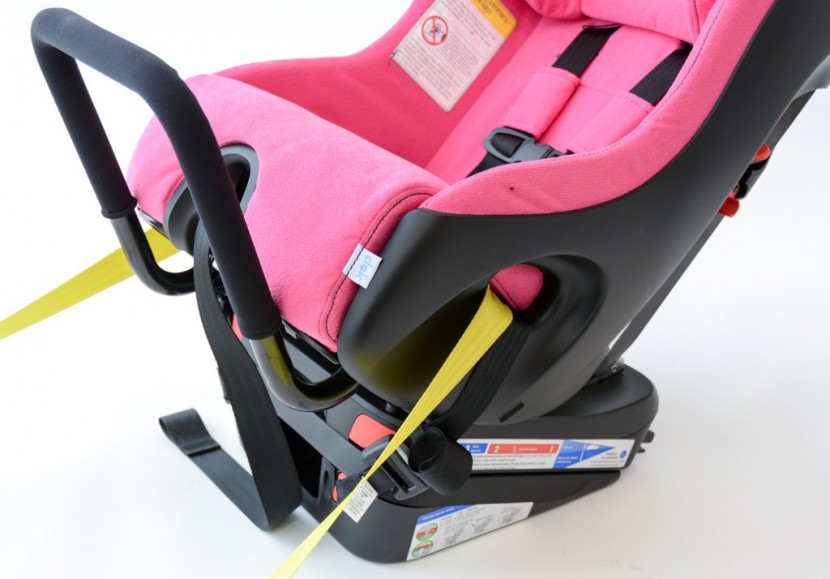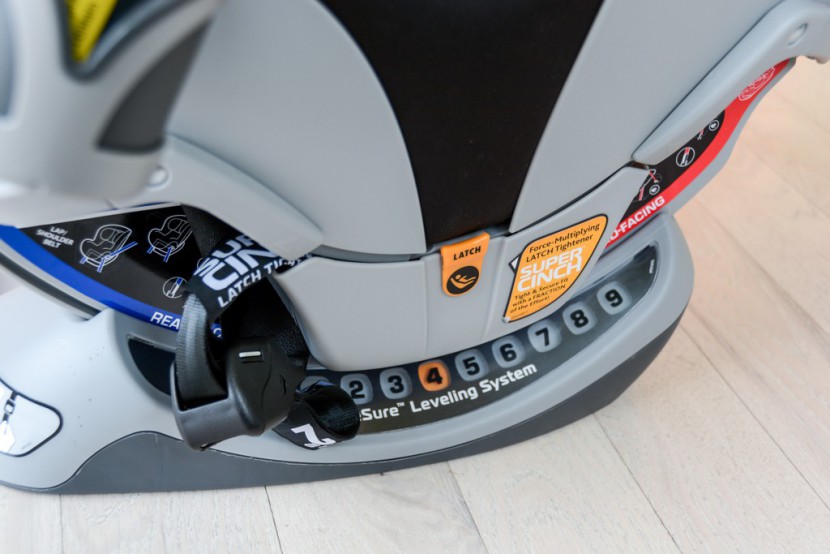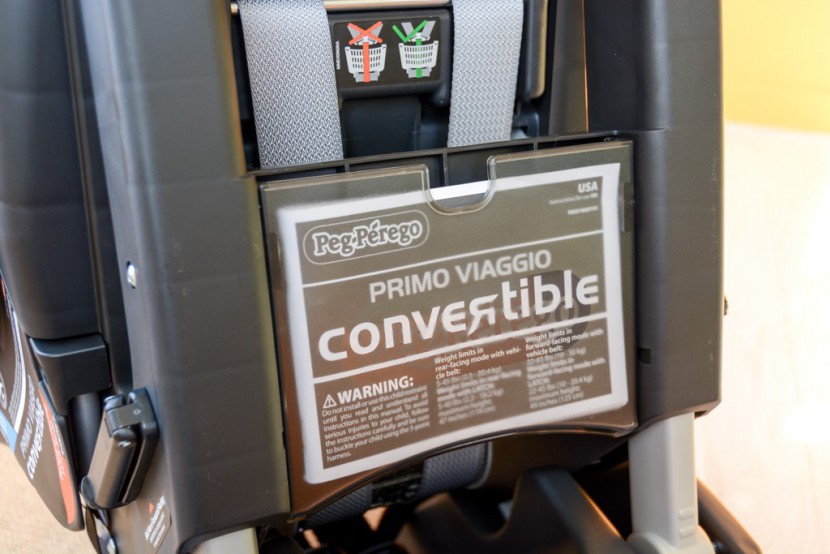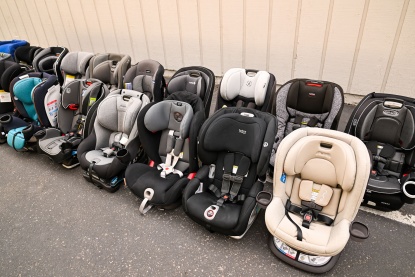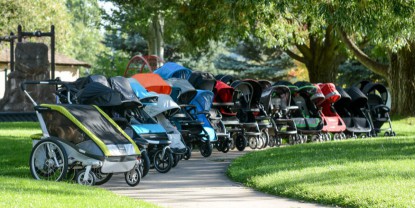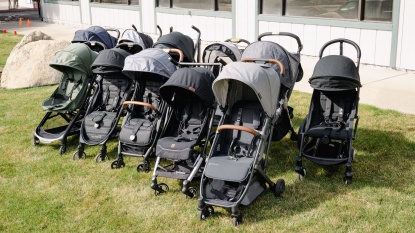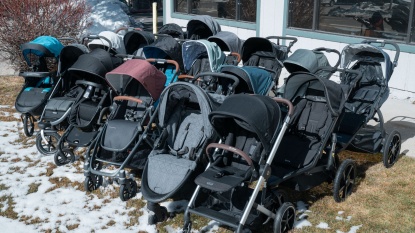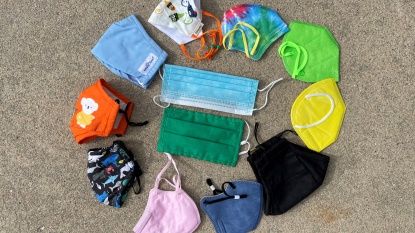After spending tens of thousands of dollars crash testing the car seats we review at a certified testing lab, we know that while many products look similar, they are not equal, and all offer a very different user experience. This buying guide is designed to help parents assess and filter the variety of convertible car seats on the market by guiding what they should look for in a car seat and why.
We also suggest parents read our convertible car seats review to learn which models impressed us during testing and why. If you are having trouble understanding car seat installation or want to make sure you aren't making any common installation mistakes, you should also read How to Avoid Infant Car Seat Installation Mistakes.
Why Buy a Convertible Car Seat?
While we feel parents should purchase and use an infant car seats while your baby is small, you will need to acquire a convertible option after your baby outgrows their infant seat. This change happens when your baby reaches somewhere between 9-12 months of age, depending on your particular car seat and how fast your baby grows. We recommend keeping your little one in the infant car seat until they are 9-12 months, or until the manufacturer guidelines indicate it is time for a change. More often than not, the baby's height will be the limiting factor when it is time to change seats, but don't forget to track weight as well.
Height and Weight Limits
Most of the seats in this review claim to be suitable for children from 5 lbs up to 40-80 lbs and height of 40-57 inches tall, depending on the seat. However, we think the design and features of an infant seat are better suited for younger babies, and parents should avoid convertible car seats until their baby reaches at least 9 months or has exceeded the maximum height or weight limit for their infant seat (height being more likely).
Choose a Seat that Lets Your Baby Stay Rear-facing Longer
Studies have shown that keeping children rear-facing longer is much safer than switching them to forward-facing. The longer a seat can sit rear-facing, the better. All of the options in this review can remain rear-facing until the baby is at least 40 lbs, with two seats offering a 45-pound limit. The Clek Foonf and Graco Extend2Fit both work rear-facing up to 50 lbs (a big selling point for these products).
A study of 15 years of traffic injury data published in 2007 about Injury Prevention concluded that placing children age 1-2 years of age in the rear-facing position resulted in 5.3 times lower risk of death or serious injury compared to a forward-facing position. Please keep your baby rear-facing as long as possible.
So, are the specifications for the car seat's rear-facing capacity a concern? Or are the front-facing limits more critical? Well, both are important, but if we had to pick one, we'd choose the rear-facing limit given the significant increase in the potential safety of children sitting rear-facing. The longer a child can sit rear-facing, the better. Even if your child needs to scrunch their knees and have less legroom, it is still safest to be rear-facing as long as they are within the height and weight requirements of the seat.
Height Limits Typically Matter Most
A general rule of thumb for these seats is that many children might reach the height limit before the weight restriction. However, this is not a hard and fast rule, so parents should keep in mind the limits on their seat concerning the growth of their child, as both are equally important in keeping children safe while riding in a vehicle.
Types of Car Seats
There are primarily two types of car seats (not counting top-ranked booster seats), the infant car seat and the convertible car seat. Both options typically work with infants, and they have similar features and functionality, but they are not the same. There are pros and cons to type, and we explore that in more detail in our infant car seat review (especially why we feel even top-ranking convertible car seats are not appropriate for infants). However, all parents will need to use a convertible seat at some point.
Despite the manufacturer's marketing that sometimes allows for the use of convertible seats for infants as small as 5 lbs, we think you should wait to use them until after your baby has outgrown their infant-style seat. While parents might want to cut corners and save money by limiting the amount of baby gear they purchase, we do not think your child's safety seat is the right place to cut corners. We strongly recommend the purchase of an infant and a convertible seat.
Infant Car Seats
- Separate Bases/Detachable Seats — An infant seat has a carrier portion that can detach from the base that remains in the car. The carrier can be used to carry a baby from one place to another and clicks onto the base for vehicle travel. Being able to transport the baby from place to place while leaving the base in the car gives parents increased freedom and allows the baby to remain sleeping while parents run errands. These carriers can also be attached to a compatible stroller for more convenience on the go. Many of the strollers offer car seat adapters, or you could try a car seat frame stroller. We find being able to click the carrier into a stroller the easiest choice.
- Canopy — Infant car seats traditionally offer a canopy to block the sun and other elements. Conversely, convertible seats don't have sunshades, and parents should not create one on their own for safety reasons.
- Lower Weight and Height Restrictions — Even though some of the infant seats will work up to 40 lbs, their range is still smaller than the convertible car seat that often works from 5-65+ lbs depending on the product. This limited weight range is a result of the carrier being specifically for little bodies, as opposed to a design that tries to work many sizes without fitting any of them well. It is this factor that makes an infant seat perfect for newborns and younger babies and the type of car seat we recommend for infants.
Convertible Car Seats
We recommend that babies transition from an infant car seat to a convertible seat at about 9 to 12 months old or when they reach the height or weight limitations of their infant seat. The term “convertible” derives from the seat's ability to be used in a rear-facing position and then “convert” to a forward-facing seat for older/larger children. Being able to use a convertible seat with an infant may tempt you into considering a convertible option as your only car seat, but we urge you not to take a “one and done” approach to finding the the best car seats.
We do not recommend using so-called “all-in-one” car seats, which are specified to support a wide range of ages, in some cases from infants to pre-teen kids. We believe that infant car seats are the best choice for newborns because they are more convenient and provide a design specifically with smaller bodies in mind. This type of seat fits infants better, including positioning them better for breathing and sleeping safely. We recommend switching from an infant seat to a convertible seat at 9-12 months or when the baby outgrows their infant seat, as identified in the owner's manual. Similarly, we prefer convertible seats (designed more specifically for the 9+ months age range) over the “all-in-one” seats, which may attempt to span from infant to pre-teen booster seat range.
Know the Basics
While all the seats available for purchase in the US meet or exceed federal safety requirements, they are not equal in their crash test results, design, ease of use, or functionality. We will cover the features and performance metrics commonly considered when looking at different seats.
Crash Tests
As you might expect, crash test results are a key metric in the performance of car seats, and thus help differentiate between products. Every car seat must be able to pass a federal crash test safety standard, with random products chosen by the National Highway Transportation Safety Administration (NHTSA) for testing each year. Each selected seat goes through crash testing in a facility that is designed to simulate actual head-on collisions using a crash sled seat and crash test baby/toddler dummies. These tests collect data generated by G-force sensors located in the test dummies head and chest that measure and record the amount of force exerted on the dummy baby's head and chest. Our test goes a step further with a slightly faster speed and a sled that more closely mimics modern seat designs and padding. Our test is a 32 mph crash simulation, while the federal standard is 30 mph.
We work with the same testing facility as NHTSA (MGA Research) to run our simulated crash tests for each seat we review for comparison purposes. The sled is used to simulate the forces in an actual car crash, and the sensors record the forces on the “child's” body during the simulated crash. We used a forward-facing Hybrid III 3 YO Part 572 P dummy (3-year-old test dummy) in our commissioned crash tests, because NHTSA crash injury studies have shown that the risk of injury is higher when children are forward-facing, and the heavier 3 yr old test dummy provides a more strenuous test of the seat's ability. We analyzed the sensor data to determine our crash test analysis results.
The good news is the federal requirements ensure that all the seats sold in the US provide at least a minimum level of protection. Therefore, all the products available for purchase can be considered safe.
Some seats performed better in our crash tests, so we gave higher scores to those seats with the assumption that they offer an extra margin of protection based on crash test results. We believe this matters and deserves to be a factor parents consider when deciding which seat to purchase.
It is not enough for you to purchase and use a car seat. You must install and use the seat properly and consistently to help ensure safety. Injury or death can potentially occur in an auto accident if a car seat installation or the child restraints are not correct.
Side Impact Protection (SIP) Claims: Buyer Beware
The photos above show a few of the side-impact features marketed by the manufacturers of some of the seats we reviewed. In order from left to right, they are the Clek Foonf with a steel frame for additional SIP, and the Peg Perego Primo Viaggio Convertible that claims “adjustable” SIP.
Because there is no agreed-upon definition of SIP, we aren't sure exactly what all of the claims of SIP mean, and little information is provided to support or explain each manufacturer's claims. Clek Foonf offers more information and transparency on their website than any other we were able to find, including video and results of their side-impact crash tests. Still, overall, transparency is surprisingly lacking across brands.
Currently, there is only a suggested plan for a potentially regulated side impact protection (SIP) testing. However, at this time, there is no regulation testing or common language agreement that determines what to test, how to test it, how to interpret results or how companies should define the terms, or what kind of claims they can make. All of the seats in this review claim SIP in the design of their seat or testing process, but the term itself is somewhat ambiguous, as it means something different depending on which manufacturer is making a claim. For example, Maxi-Cosi cites independent tests they paid for to determine the efficacy of their design in the case of a side collision. While Graco also claims independent testing for SIP, but their definition and test results only cover keeping your child contained in the harness in the event of a side collision. We think most parents would assume that keeping a child retained in the seat by the harness is an essential function of a car seat as opposed to a unique SIP feature. Therefore, we suggest that consumers remain skeptical about any SIP claims given that there is no set standard on what it means or how one claim compares to another.
Extra safety features are always a bonus, and we welcome useful and tested safety additions that improve products. However, we think parents should be aware of what appears to be some “Safety Washing” happening in the industry concerning the marketing of side impact protection and other features that claim additional protection. Given that there is no industry standard for SIP and other features, and all the manufacturers seem to mean something different, it results in words that have no meaning in and of themselves. This issue requires that parents do further research to determine what manufacturers mean when they claim side impact protection, whether their design or unique feature has undergone testing, and what the tests include. That is a big responsibility to dump on parents, and often, the information is not available or accessible (trust us, we looked).
We feel manufacturers use SIP and other safety features as a marketing tool to increase product interest. We'd like to see an agreed-upon standard for these claims that force manufacturers to focus on engineering designs that provide value and that parents can easily compare. To determine what manufacturers mean by SIP and other safety features and their testing process (if any), we tried to find compelling information or evidence related to their claims. We failed, which means we can't compare the features or even discuss them with clarity.
For the time being, we came up short in our efforts to find credible information or evidence to support the claims.
Seat Construction
Every seat consists of similar kinds of materials and basic designs with a few standouts and variations. The majority of the seats have a hard plastic outer shell with dense foam padding as the second layer. A few of the seats also have metal frame components or features that offer increased shell stability that potentially improve seat performance in the event of a crash (though this is difficult to prove in standard tests). The final component is primarily for comfort and includes a layer of padding and fabric that gives the seat its overall look and helps position the baby properly in the seat. Many seats also offer an infant insert pillow. This insert is a positioner that helps smaller bodies fit properly in the seat and within the harness. The insert fits above the fabric cover and is removable when your baby grows bigger, or it is no longer needed. Some of the seats also offer padding or “head wings” around the head area. Presumably, this is for impact protection and possibly comfort; some manufacturers explicitly state this is the purpose of the wings, while others refrain from saying anything outright. The lack of manufacturer clarification makes it difficult for us to tell if the feature is intended to truly improve safety, or give the illusion of improving safety.
We believe that the differences in seat construction that matter are those that reflect in crash test performance, as well as those that impact the baby's overall comfort.
External Shell
The external hard shell is the first line of defense in an accident, as it provides structural support and contains the energy-absorbing hard foam molded to the inside. The construction and design work similarly to a bike helmet, by using an exterior hard plastic shell combined with a layer of energy-absorbing hard foam placed between the shell and your head.
Foam
There are two basic kinds of foam in a typical convertible seat.
- Hard Foam — In our review, every one of the convertible seats has foam as their primary energy-absorbing material, which helps keep your baby safe in a crash. This foam is either made of Expanded Polystyrene (EPS) (above left) or Expanded Polypropylene (EPP) (above right). EPS is the more common type and is somewhat of the industry standard and found in the majority of seats we tested. Alternatively, the Britax seats use EPP foam. We like the EPP better and feel it has a slight edge over EPS because it is somewhat forgiving when bent or pressed on, where EPS will break or deform, and it doesn't off-gas like EPS, which we prefer. The EPS foam, comparable to the foam found in most bike helmets, is common for impact protection applications. The greater difference between seats is how much foam they have and where it is inside the shell of the seat. A few seats had foam inside the entire shell, while others had more foam in the torso and head region with little to no foam in the bottom of the seat.
- Soft Foam — We tested some seats that provided a softer foam around the head portion of the seat. Soft foam doesn't offer much impact protection in a crash, but it does offer extra comfort in everyday use.
Anchoring the Car Seat
There are two different methods used to secure a car seat in a vehicle. We will provide you with an overview of each, including the most common reasons to use one over the other or when you might need to use one over the other based on manufacturer guidelines. You can find more information about installation in our article, How to Avoid Infant Car Seat Installation Mistakes.
To properly install your car seat, you need to read not only the car seat user's manual but your vehicle user's manual as well. Why? The vehicle manual is the overriding authority on how to install the car seat and supersedes the car seat manual if the two directives conflict. The vehicle manual is especially important when determining how to install a car seat based on your child's weight. Some car seats require a change from LATCH anchors to seatbelt installation when your child reaches a certain weight. However, your vehicle manual will also have limitations on how much weight can be attached to the LATCH anchors. So if your car seat manual says the seat can be installed using LATCH up to 60 lbs of child weight, but your vehicle manual shows a limit of 50 lbs, then you must switch to the seatbelt installation at 50 lbs, not 60.
- Installation using LATCH connectors — Beginning in 2002, the majority of cars in the United States have the mandatory LATCH (Lower Anchors and Tethers for CHildren) on the left and right rear seat positions (not the center seat). This type of connection was created to provide a more straightforward method of attaching car seats to vehicles. We recommend using LATCH when it is available since it is usually the best and easiest way to ensure a tight, secure connection.
- Installing with a Seat Belt — You can install all the seats using the vehicle seat belt through the designated pathways provided on the seat. Some products have built-in lock-offs, while others do not. We found the lock-off usually makes this process easier. Only a minority of vehicles offer LATCH connectors for the vehicle center seat, so a seat belt might be your only option if you want to use the center seat. Also, once your child reaches a certain weight, the seat belt installation often becomes your only install option, as the LATCH system will become unsafe due to the combined weight of the baby and car seat (see tip above).
Placing the car seat in the center position can reduce injury by more than 40% compared to installing the seat in a side location.
During our installation testing, we found significant differences between car seats regarding ease of installation with a seat belt depending on the vehicle we were using. Parents who plan to use this location exclusively may want to install their seat of choice in this position to ensure that a good fit is possible before choosing to keep it (Amazon has a great and easy return policy).
Both methods of installation are possible whether the seat configuration is rear-facing or front-facing. Depending on the laws in your area, children need to be restrained rear-facing up to a certain age or weight range. We recommend you keep children rear-facing as long as possible (within the guidelines of the seat) because it is safer for children in the event of an accident. The choice of how to install is somewhat up to you and what works best for your car, but all seats will eventually need seat belt installation because the LATCH method has weight restrictions.
Level Indicators
Each seat we tested has a level indicator to help parents confirm when its installation angle is correct. While they don't all look or function the same, they all provide similar information and guidance.
Some level indicators are plastic molded lines on the seat or a line on a sticker stuck to the shell side. The level line should be parallel to the ground after installation, and it is best to observe by standing back from the vehicle. Some indicators look more like a traditional level you'd find in construction with liquid and a bubble, or a small ball that rolls inside a plastic casing that indicates the seat is installed at the correct angle range when it falls within a pre-marked area in its path. Parents must use the level as instructed in the user guide with their product.
Shoulder Height Adjustment
Adjusting the shoulder height of the harness on a car seat may not sound like a big deal until you have to do it. Being able to alter the harness quickly and easily means your child will be using a correctly fitting harness at all times. Avoiding changing the harness height because it is convoluted or difficult to operate could lead to improper restraining in the seat. Not using the harness or seat correctly could lead to injury or possible death in the event of a crash, so this is an important feature to consider on any seat.
Rethreading the Harness to Adjust Height (yuck!)
Rethreading harness straps to adjust shoulder height is the most challenging method of adjustment in the seats we reviewed. Rethreading requires removing the harness straps from a connector on the back of the seat and unthreading the straps from the current slots through the back to move them to higher slots. The process itself isn't that difficult, even though it is convoluted. However, you usually don't notice you need to adjust the straps until your baby is in the seat. This process means you will need to remove your baby from the seat and possibly the seat from the car to adjust. Then, you will need to reinstall the seat before you place your baby inside and get on your way. We worry that some parents will procrastinate, making adjustments for this reason. This hassle could lead to a cycle of forgetting to do it time and time again, leaving your child driving around in a poorly fitted harness. Do NOT do this!!
Easy to Adjust Harness Height (Non-Rethread)
The easiest to change, and thus our favorite seats, are those whose height can move without the need for rethreading. This design means no splitter plate, no shifting the straps from one slot to another, no removing the baby from the seat. This kind of adjustment can happen on the fly as soon as you notice the harness needs changing. It is a quick and relatively painless process that requires either pushing a button, pulling a tab or moving levers in, and then pulling the headrest/shoulder portion of the seat up to the required height.
Harness Tightening and Release
Once the shoulder straps are correct and your child is buckled in, the entire harness tightens by pulling on the strap that trails from the foot of the seat. This process should be easy, and in theory, it is, but not all tightening straps are as easy as others.
Most of the harnesses we tested loosen by pressing a button near the foot of the seat, while others worked by lifting a small lever in the same location. The button or lever should be somewhat stiff to operate to prevent little hands from pressing the button. However, they shouldn't be so difficult to use that an adult can't do it with one finger. Some seats have buttons that are visible on top of the seat fabric, while others have the adjustment hidden under padding and material to help little ones avoid temptation (out of sight, out of mind).
Buckle
The buckles on the majority of the seats we tested are so remarkably similar we can't help but wonder if some of them come from the same assembly line. Many were easy enough to use, and while there is a pressure metric they need to meet, some were too stiff and hard to operate. If you have any thumb strength or structural hand issues, this might be more important to you than it is for others.
Weight
While the weight of the carrier in our review of infant seats was important because you need to transport the carriers from place to place, the weight of the convertible seats is less important in our minds because you won't be carrying them around that often.
Other Features
Sometimes, the biggest differences between seats are smaller details. In a product genre where so many of the seats are similar in structure and function, the details are the only thing that helps differentiate them from each other. With gear that is so heavily regulated, it could be difficult to tell one product from another or for parents to decide why one is better than another without considering the features that make them stand out.
Anti-Rebound Bar
While the jury is out on the efficacy of the anti-rebound bar offering additional protection, general physics seems to support the claim that it does. This bar works on the rear-facing seat and prevents the seat from dramatically flipping back against the vehicle seat back in the event of a crash. It is the back-and-forth motion that causes head and neck trauma in a collision, so less movement theoretically means fewer injuries. Even though we like the idea of the bar, we think that currently, there is not enough information available for caregivers to believe that the absence of this should be a deal-breaker. For the time being, we think it is a potentially useful addition to an otherwise high-scoring seat.
LATCH Storage
If you use the seat belt to anchor your seat to the vehicle instead of the LATCH connectors, it is useful to have a spot to store the unused anchors. Unlike infant seats, where the anchors could get in the way of proper attachment of the carrier to the base, the anchors on convertible seats are more of a nuisance than a potential hazard. Not all of the storage options are great, and we prefer the choices that keep the anchors attached to the shell body, so they don't come loose. Chicco NextFit has interesting plastic side pockets, which are sort of hard to use but keep them out of sight. It probably isn't necessary, though, and any seat that keeps them connected to the shell seem to work fine.
Manual Storage
On each seat, there should be a spot to store the user's manual. You should have easy access to it in case you need it, but it shouldn't be where little ones can find it or where spilled items and vomit can reach it. Onboard storage helps keep answers at your fingertips to improve overall use and safety. It is essential to use the storage space as intended so you aren't caught without the manual when you need it. Some of the seats store the manual under the padding where the child would sit, which seems like a poor location and one where it could easily get damaged, though this is better than areas where children can find the manual and destroy it before you notice. If you lose the manual or it does get damaged, most are available online, or you can order a new one from the company. It is far better to do the extra work to get a manual than it is to guess specific installation or design information about your seat.
How do I decide which convertible car seat is best for my child?
With so many options and features to choose from, the decision on which car seat to buy can feel daunting. We've broken the process down into steps that help you determine what to consider when deciding which option is best for you and your child. While there are several excellent high-scoring products in this review, your particular needs or limitations might find you choosing a different model that works best for you even if it didn't win an award in our tests.
Step 1: Consider Where the Seat Will Go --Installation
As previously discussed, where you plan to install the car seat may impact which product you choose to purchase. Where and how you plan to use the seat might also influence you. Your usage pattern can make the difference between which option best meets your needs and which will be frustrating to use. Given that more than 80% of car seats have been shown to have at least one serious problem with installation choosing an option that is easy to install in the location or locations you want will help keep your baby safer.
Urban Parents
If you reside in a major city and will need to transport your little one in a cab or Uber, you may want to look at some of the lighter-weight seats. You may also want to do this if you travel frequently and plan to lug a car seat through the airport or on a train. Some of these seats are heavy, and this should be a factor for parents who won't be installing the seat in their car and forgetting about it.
Center or Side?
Will your seat be installed in the center seat or on the side? Some vehicles do not offer LATCH connection points for the center seat, so you will want to check your vehicle for anchor points. Alternatively, you can install the seat using the belt only, and we found during testing that many of the car seats feel very secure installed using a lap-only belt, and some were even easier to install with the vehicle belt than with LATCH.
Research shows a 43% lower risk of injury for car seats secured in the center, but the center location is only safe if you properly anchor the seat. The research also shows that more than 80% of car seats have a minimum of one serious problem with the installation. Therefore, we suggest parents take the ease of installation as seriously as we do.
We think it is worth noting that 61% of us parents place car seats on one of the side seats. The side seat is more convenient for getting the child in and out of the vehicle, and it is the only option for families with multiple children or those with cars built before 2002.
Making mistakes when installing a seat or securing the baby in the seat is common. Because of this, we have dedicated a separate article to this topic. It is crucial that car seats be correctly used for them to work properly. For this reason, we advocate parents consider ease of installation and ease of use as critical factors in their buying decisions.
Step 2: Ease of Use
Because installing your seat is likely to be only an occasional process for most parents, it is the daily ease of use that will impact your experience and the overall safety of the car seat. Getting your child into and out of the seat, as well as strapping them into the harness, are activities you will need to perform daily. How difficult these activities are will quickly become more important to you than how difficult it is to get the seat anchored into the vehicle.
Ease of use varies from seat to seat. Chances are you have a few seats on your list after considering installation locations and how easy it is to install. Finding the seat or seats in this list that are also easy to use should help narrow the options further.
Step 3: Crash Test Performance
All the seats in this review have passed the minimum requirements for crash tests as outlined by federal guidelines. Therefore, all of the seats offer a basic level of protection, but some perform significantly better than others, and you can consider them as offering an extra margin of protection compared to other seats.
Many parents might consider crash test performance to be the most critical factor in choosing a seat. However, because installation and ease of use impact your ability to use the seat correctly, which influences overall safety, we believe you should consider both of those before the actual crash data. Given that over 80% of parents install or misuse their seat, it matters little how safe a product is if you don't use it correctly. After finding a seat that is easy to install and use, then it is crucial to find one that will function well in the event of a crash after you install it correctly and strap the baby in according to the instructions.
Now that you have narrowed down your list to a few finalists, you can use our crash test analysis to choose the seat that offers an extra margin of protection for your final selection.
The foam used to construct car seats has an actual shelf life, so after a certain period, you should no longer use the seat, and it should be destroyed. If you choose to use a hand-me-down car seat, you need to ensure it has not already expired and that it won't expire in the 9 to 12 months that you will need it. Also, it is important to retire any car seat involved in an accident. Even if the seat appears to be uncompromised, you should still discard it.
Conclusion
Purchasing a convertible seat does not need to be a daunting experience despite the plethora of options on the market. With a few key considerations and a review of the details on how each seat compares to the rest, you have all the information you need to determine which seat will work best for your family. We believe the award winners can fill the niche for just about any need and budget, but if you find another seat in the group that looks more worthy for you, compare it to the top-scoring or award-winning products in this review. The variety of options might seem overwhelming. Still, we have your back with information and a detailed analysis of many of the viable candidates, so your decision can be as easy as 1,2,3.
Optional Reading: Car Seat Lingo
To help you understand all things car seats, we have provided a little terminology insight that you might come in contact with when reviewing car seat information. Knowing the lingo can help you stay the course and ensure that you understand the details of what you are reading. This knowledge is important for interpreting information easily.
The terms and definitions are from the National Child Passenger Safety (CPS) Certification Training Program manual. While some definitions have been slightly changed to increase readability, the intent/meaning is the same. You can read these definitions here.
